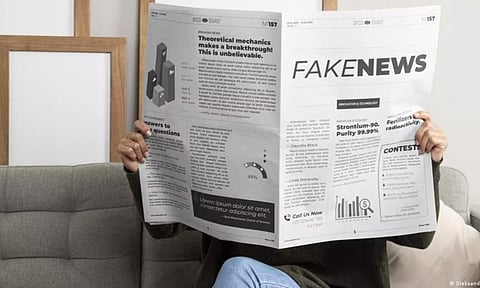

• FRED SCHWALLER
SAN FRANCISCO: More than 2 billion voters in 50 countries are set to go to the polls in 2024 — a record-breaking year for elections. But 2024 is also the year when artificial intelligence (AI) could flood our screens with fake news like never before. Some experts have voiced concern that new generative AI tools and a lack of regulation around the quickly-evolving technology may make it easier than ever to produce deepfake content and potentially influence the outcomes of elections around the world.
And a study has now found that people’s ability to determine what is true and what is fake news is linked to their education and voting preferences. The US-based study suggests that Democrat voters, those traditionally on the left of the political spectrum, are more likely to discern true and false news than Republican voters, those traditionally on the right. But it also found that people understand their ability to detect news quite well — meaning, people who do not perform well at detecting true and fake news know that they did not perform well.
“This study confirms that Conservatives seem more susceptible to online disinformation and not just fake news,” said Neil Dagnall, a cognitive psychologist at the Manchester Metropolitan University, UK, who was not involved in the study.
The study, which was published in the journal Communications Psychology, involved 533 Democrat and Republican voters in the United States. The voters were asked to rate whether news headlines were true or false, and how confident they were in their judgement. Aside from the differences apparently linked to political affiliation, the study found that men were better at detecting fake news than women, and that more educated participants were better at detecting fake news.
Education level in particular had the strongest effect on peoples’ ability to discern fake news, with clear increases in performances the more time they had spent in education.
“This aligns with the overall literature. Most [research] says that educated participants are more likely to separate true and false news, and that men generally perform better than women,” said Deni Mazrekaj, a sociologist at Utrecht University, Netherlands, who was not involved in the study.
Mazrekaj said that the sheer number of variables involved in a person believing fake news means that understanding the reasons behind that may be impossibly complex. This current study, for instance, looked at political party affiliation, age, gender, and education, which were all found to play a role.
“But it’s important to know that this study is purely correlational. We can’t say [what causes Republicans to be] less able to distinguish fake news than Democrats. There are many factors at play here. It can be to do with how interested you are in politics, or it can be your analytical ability, or emotional responses to things. None of these are to do with a partisan split,” said Mazrekaj. However, Dagnall said there are psychological studies that have offered explanations for why people on the far right tend to believe fake news more than those with other political beliefs.
“Populist supporters prefer strong, autocratic leaders who value discipline and conformity over personal autonomy and individual liberties,” Dagnall told DW via email.
“The best thing to tackle fake news of course would be more education. That’s number one. But shorter-term things like media literacy programs and fact checking websites can help,” said Mazrekaj.